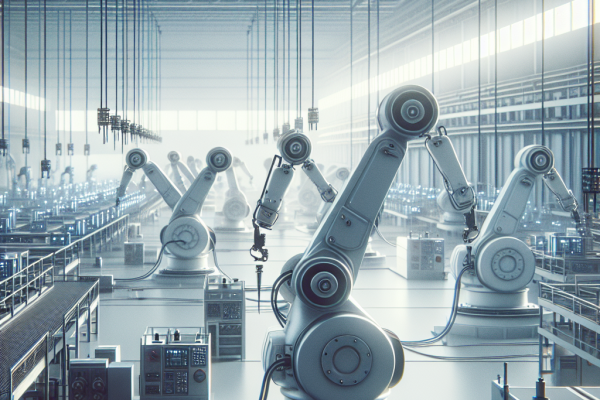America’s manufacturing heartland is reeling. In June 2025, more than 25,000 factory workers lost their jobs, marking the sharpest downturn since the 2008 recession. The culprit? Escalating trade tensions and tariffs, a legacy of the Trump administration’s economic war with China and other global partners. In what used to be bustling industrial towns, factory lots stand empty and families watch their prospects dim—all in the shadow of a trade war that’s far from over (Reuters, 2025).
This seismic shift matters now more than ever. Manufacturing has always been the backbone of America’s middle class, representing stable, well-paid jobs and economic mobility. But with layoffs mounting and job openings dwindling, the effects of tariffs on US factory workers are rippling across the country, reshaping communities and political landscapes alike.
The Problem: Manufacturing Layoffs Due to Tariffs
The administration’s trade war aimed to boost American manufacturing by imposing tariffs on billions in Chinese imports. The reality? Many US factories are facing higher input costs and retaliatory tariffs, reducing competitiveness abroad and thinning profit margins at home. According to Financial Times, the country saw a 12% decline in manufacturing job openings in the first half of 2025, signaling not just layoffs, but a freeze on new opportunities as well.
- US manufacturing job losses 2025: Over 80,000 factory jobs vanished in the previous 12 months—a stark reversal from pre-trade war growth (Bloomberg, June 2025).
- Is the trade war causing unemployment? Multiple data points indicate yes: layoffs, a decline in job postings, and shuttered factories (“The plant closures are directly tied to tariff-driven cost increases,” reports Reuters).
- All of these factors combine to threaten the very jobs trade policies promised to protect.
Why It Matters: Human and Economic Impact
Behind every headline statistic lies a very real, very human story. The effects of tariffs on US factory workers are profound, especially in America’s heartland. Many of these jobs supported entire communities—acting as anchors for schools, small businesses, and public services.
Now, middle-class families face an uncertain road. According to Bloomberg, “Trade tensions are hitting middle-class jobs hardest, with the Midwest and South bearing the heaviest brunt.” Jobless rates in these regions have jumped 2.3 percentage points since 2024, and surveys show rising levels of anxiety, debt, and migration as families seek new opportunities elsewhere.
Expert Insights & Data
What Do the Numbers Say?
- Manufacturing layoffs due to tariffs: Reuters notes that more than 40% of all manufacturing layoffs in 2025 are directly attributed by employers to tariffs and supply chain disruptions (Reuters).
- Decline in manufacturing job openings 2025: As per Financial Times, new job postings in durable goods manufacturing fell by 15% compared to the previous year.
- “For every job gained in a protected sector, 1.5 jobs are lost elsewhere due to higher prices and lost exports,” says trade economist Lisa Grant (Financial Times).
How Does the Trade War Affect Middle-Class Employment?
- 70% of surveyed manufacturing workers in Ohio and Michigan report either reduced hours, frozen wages, or job loss in the past 12 months (Bloomberg).
- Communities with high reliance on manufacturing have seen average household incomes drop by $3,400 since 2023 (Bloomberg).
Future Outlook: What Lies Ahead for US Manufacturing?
The long-term effects of the US-China trade war remain uncertain, but worrying trends are emerging:
- Reshoring vs. retreat: Some political leaders hope tariffs will force jobs back to US soil. Yet, data shows most multinational firms are instead shifting supply chains to third countries—leaving US workers in limbo (Reuters).
- Automation acceleration: Higher costs are driving manufacturers to automate, which further reduces demand for low- and mid-skill labor over the next 2–5 years.
- Policy risks and uncertainty: Investors are treading carefully, as rapidly shifting policies deter long-term investments in US plants.
On the flip side, there are opportunities for growth—especially in green technologies and advanced automation—but only if policies shift to align workforce training and investment.
Case Study: Factory Job Losses in the Midwest (2022–2025)
| Year | Manufacturing Jobs (Midwest) | Reported Layoffs | Key Factor |
|---|---|---|---|
| 2022 | 9.2 million | 18,000 | COVID recovery |
| 2023 | 9.5 million | 14,000 | Strong GDP growth |
| 2024 | 9.3 million | 29,000 | Tariff escalation |
| 2025 | 8.9 million | 52,000 | Trade war fallout |
Infographic Idea: Timeline chart showing manufacturing employment decline in relation to tariff announcements and trade policy changes (2022–2025).
Related Links
- [External: MIT study on trade and jobs]
- [External: NASA report on climate impact from manufacturing]
- [External: WSJ: Factory jobs at risk from tariffs]
FAQs
How does the trade war affect middle-class employment?
Trade wars raise prices for US-made goods, reduce overseas demand, and cost suppliers more. This squeezes profits, leading to layoffs—particularly in regions reliant on factory jobs. Middle-class workers are hit hardest (Bloomberg).
Is the trade war causing unemployment?
Evidence suggests yes: US manufacturing job losses have accelerated since new tariffs were introduced, with thousands of layoffs specifically attributed to trade policy (Reuters).
What are the long-term effects of the US-China trade war on jobs?
Prolonged trade tensions may permanently reduce manufacturing employment, incentivize automation, and push US companies to relocate. Local economies could see slower recovery and continued population decline.
Are tariffs effective in bringing back factory jobs?
So far, most data shows tariffs have not led to large-scale reshoring. Many firms relocate supply chains, and employment continues to drift downward (Financial Times).
What sectors are most impacted by manufacturing layoffs due to tariffs?
Automotive, electronics, and steel industries have been especially hard-hit—losing the largest share of jobs and new hiring opportunities.
Conclusion
The Trump trade war impact on manufacturing jobs is unmistakable: tens of thousands out of work, a battered middle class, and a once-vibrant sector at a crossroads. As the dust settles, America must rethink whether tariffs are creating growth—or sacrificing the very workers they intended to protect. The question now: How will America rebuild its manufacturing backbone in a changing world?


